Guadalupe 113k***
We got a late start leaving beautiful Merida. After an 8AM out of bed, followed by breakfast, uploading photographs, and repacking, we didn’t leave the Melina Hotel until 9:30A. Then we were distracted by the Roman Bridge, the Temple Diana, the Roman Coliseum and the Theater.
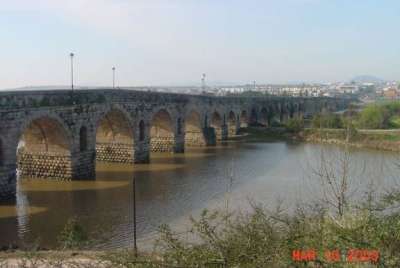
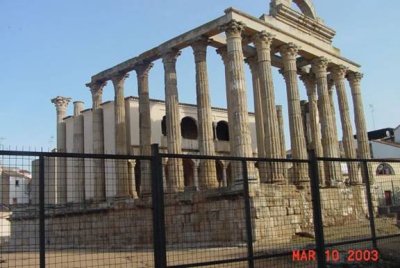

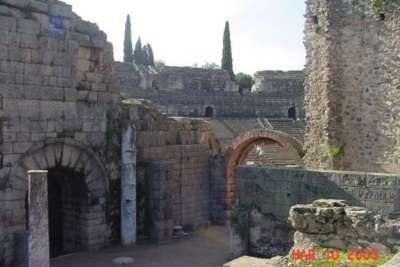
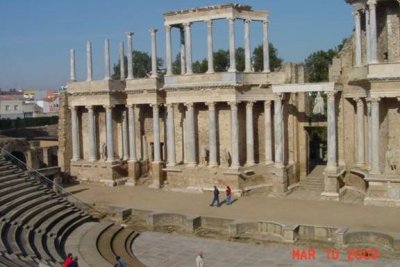
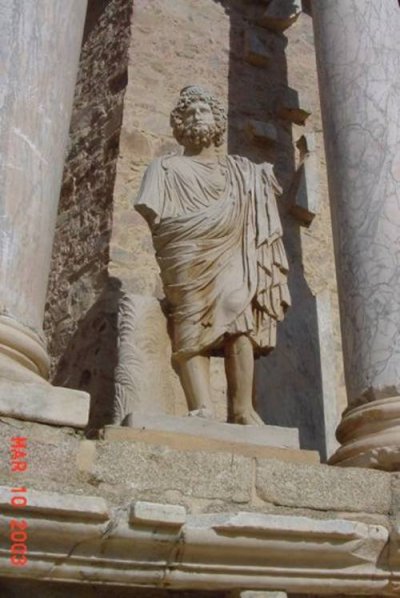
These are only some of the sights in Merida. Merida was called Lusitania in Roman times, 2000 years ago. It was the western capital of the Empire. And like everywhere else they went, the Roman’s built major, cool structures. Thank goodness the “history” museum here in Merida is closed on Mondays, year round, or we might still be in that town.
As I write this it is actually 4AM on March 11th here in Guadalupe. (We just missed Fatima in Portugal). The bells from the 16th century cathedral across the street from our hotel just went gong, gong, gong, and gong. Napoleon ransacked the place two hundred years ago. (That little guy really got around… eastern Spain, Egypt, Russia…) That is just one part of the history of Guadalupe. Some of the first natives Columbus brought back from the Caribbean were taken here to be baptized. It’s the site of (at one time) one of the largest libraries in the world. The 16th century hospital (converted to the local Los Paradores Hotel, where we are staying) was at the forefront of medicine. All started because some local farm boy in the 14th century saw the Virgin Mary in a piece of wood.
Why did they put any towns up in these mini-mountains? Farming, cattle and sheep raising and just access would have been much easier in the valleys, wouldn’t it? Who knows, but it was a challenge getting here.
Leaving Merida, we picked up the Spanish highway E90 for the first 50 kilometers. They let you ride bikes on the highways here – big shoulders, very smooth, a great way to cover ground, but not a great atmosphere. We got off in Miajadas – a typical mid-size Spanish town. Built pre-automobile, it has lots of narrow streets (no cobblestones) with buildings right up to the edge. Very limited, if any, zoning. A bike shop or jewelry store might be right in the middle of what appears to otherwise be a residential street. In any case, here’s a shot of the main street in town.
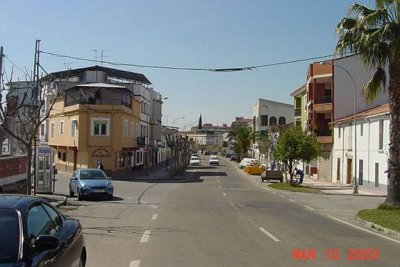
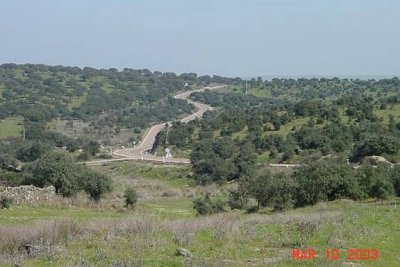
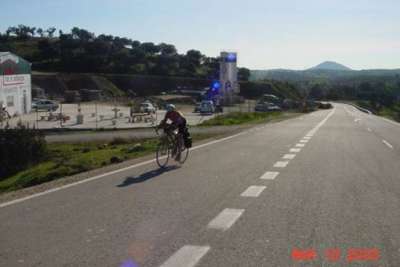
For some reason he forgot that he had lower gears, but he pushed all the way to the top. I stopped for a few photos. Here’s a guy with a donkey along the side, and two ladies with coordinating umbrellas heading up the road just before Calamero.


By the time we got to Calamero, still 22km from Guadalupe, it was already 5:30PM. Could we have made it the last 12 miles? For sure, but when? We stopped at the edge of town and asked a couple guys in a Guardia Civil police car if it was up, flat or hilly (think hand motions with bad grammar English), and they laughed. Not a good sign. One of them spoke marginal English, and I gave him the Nokia to try to get us a taxi for the last 13 miles. He couldn’t find one, but, somehow, managed to get us a bus (no kidding) to take us up the rest of the way. Here’s the cops negotiating with the bus driver.

It was well worth the 25 Euros for the ride. Charlie found another unbelievably great hotel, the third in a row, for only 80 Euros a night.
More details on the hotel and Guadalupe tomorrow.

 March 10, 2003
March 10, 2003 